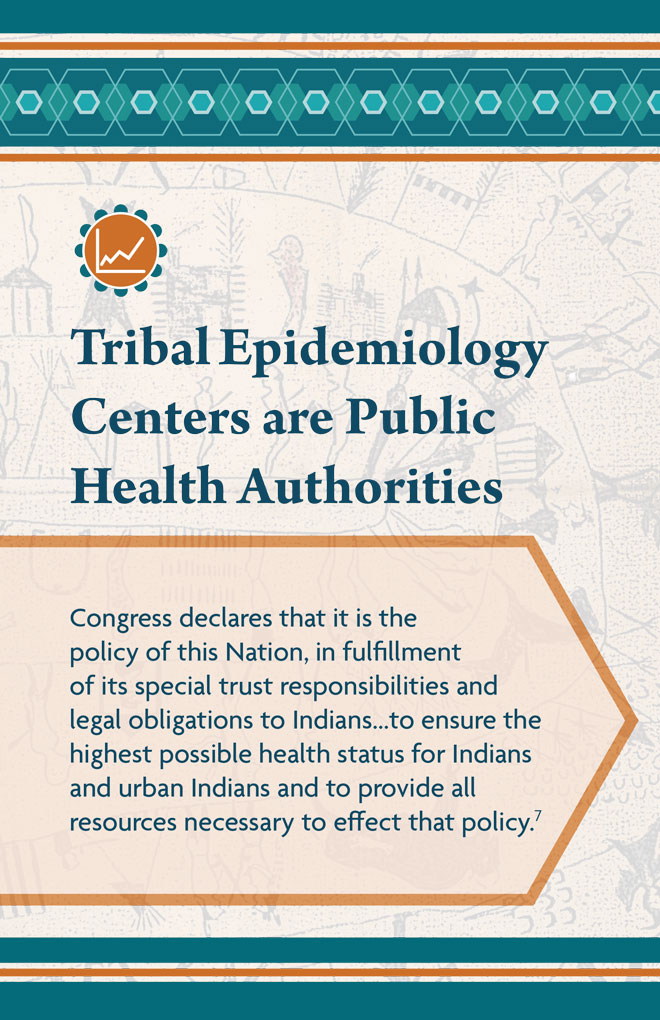TECs often collaborate with other jurisdictions, including state, local, and federal agencies. Data-sharing agreements make some of these data requests possible. However, many state and local jurisdictions will not engage in data-sharing agreements with TECs, creating delays in accessing data.
The Act was a significant step toward achieving health equity for AIAN people.
“Congress declares that it is the policy of this Nation, in fulfillment of its special trust responsibilities and legal obligations to Indians…to ensure the highest possible health status for Indians and urban Indians and to provide all resources necessary to effect that policy.”8
– 25 U.S.C.A. § 1602
25 U.S.C.A § 1621m(e)(1).
HIPAA authorizes public health authorities’ access to protected health information “for the purpose of preventing or controlling disease, injury, or disability, including, but not limited to, the reporting of disease, injury, vital events such as birth or death, and the conduct of public health surveillance, public health investigations, and public health interventions.”10
45 C.F.R. § 164.512(b)(1)(i).
4The Patient Protection and Affordable Care Act, Pub. L. No. 111-148 (2010).
525 U.S.C. §§ 1601 & 1602.
625 U.S.C.A § 1621m(e)(1).
7Best Practices in American Indian & Alaska Native Public Health: A Report From Tribal Epidemiology Centers 2013,125, available at http://itcaonline.com/wp-content/uploads/2014/03/TEC_Best_Practices_Book_2013.pdf
1045 C.F.R. § 164.512(b)(1)(i).
